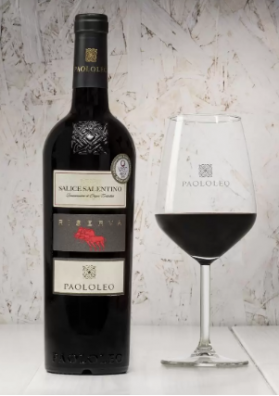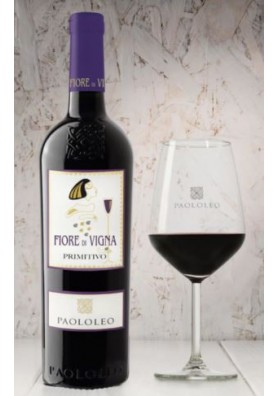Shopping Cart
- 0 item items (empty)Paolo Leo
- Our Winery
- Apollonio
- Tenute Rubino
- Cantele
- Castello Monaci
- Michele Calò e Figli
- Attanasio
- Tormaresca
- Taurino
- Torrevento
- Palamà
- Rivera
- Polvanera
- Schola Sarmenti
- Severino Garofano
- Candido
- Cantina San Donaci
- Ceci Giancarlo
- Coppi
- Duca Carlo Guarini
- I Pastini
- Jorche Vinicola
- Antico Palmento
- L'Archetipo
- Leone de Castris
- Paolo Leo
- Rosa del Golfo
- Sanchirico
- Agricole Vallone
- Morella
- Vespa
- La Scacchiera
- Otri del Salento
- Vini Pandora
- 40 Are
- Borgo Imperiale
- Vini Cortesole
- Barbalonga
- Cantina Vignuolo
- Tenute Bradascio
- The Grapes
- Vintages
- Selected for you
- Taste the Salento
Tags
Blog Categories

Paolo Leo There are 13 products.
Grecìa Rosè Rosato di Negroamaro Salento IGP
Paolo Leo
2022
Well-known expression of the Apulian terroir, rosé wine is traditionally produced specially in Salento, where the combination of climate and soil gives fresh, fruity rosé wines. Negroamaro grapes particularly are able to produce one of the most interesting rosé in Italy, due to their freshness, red fruity aromas and unmistakable character.
TASTING NOTES: Bright pink color; aromas of raspberry and strawberry, with some nuances of black pepper and Mediterranean herbs, typical from Negroamaro. Fresh and salty on the palate, medium body and good acidity, with a pleasant fruity after taste.
Show more
Calaluna Fiano Puglia IGP
Paolo Leo
2022
Of unknown origin, Fiano is one of the most prestigious white grape varieties of southern Italy. Its roots are ancient and glorious: in the Middle Ages, it was common to find Fiano wines on the tables of kings and emperors, who loved its freshness and fruity character.
FOOD PAIRING: fish, seafood, vegetable-based dishes, flow and soft cheeses.
Show more
RosaRose Blanc Spumante Negroamaro Brut
Paolo Leo
Rosarose blanc is a sparkling wine, made from Negroamaro grapes processed with the tank method (charmat). Pleasant and fresh, with delicate aromas of fruit, is the perfect match of many traditional puglian dishes, specially seafood and local desserts.
FOOD PAIRING: fresh cheeses, vegetables, fish and seafood, creamy and delicate sauces; dry pastries and creamy desserts like cheesecake
Show more
BATTIGIA Chardonnay Salento IGP
Paolo Leo
2022
Chardonnay is the most famous white grape variety in the world, able to express in a particular way the different territories where it is grown. In Salento, Chardonnay is known for its delicate tropical fruit aroma sand structured body, with the proper freshness needed to perfectly pair Apulian foods
Show more
Susumaniello Valle d'Itria IGP Rosso
Paolo Leo
2020
Susumaniello is an ancient, native black grape from Puglia, specifically from the Itria Valley. Its name refers to its very high yields in youth, that local people defined it as "loaded like a donkey" (somarello in Italian). It was ignored by puglian vinicultures for a long period, but lately it has been rediscovered and, by using modern techniques, it is now able to produce well-structured and elegant reds
Show more
Passo Del Cardinale Primitivo di Manduria DOP
Paolo Leo
2022
Primitivo grapes ripen very early, which explains its name. Interestingly, just 20 days after the harvest, Primitivo vines produce new grapes, traditionally called "second harvest"; these younger bunches are used by the winemaker to increase the freshness and acidity of these bold wines, given as a result a perfectly well-balanced red wine.
TASTING NOTES: deep ruby color; pronounced bouquet of black berries, mainly cassis and black currant, with notes of licorice and coconut; full-bodied and balanced, with velvety tannins and a perfect acidity; lingering finish of forest fruits and spices jam.
Show more
Orfeo Negroamaro Puglia IGP
Paolo Leo
2021
Negroamaro is considered the main native grape variety of Salento, with an excellent content of tannin sand flavor compounds that give intense but elegant, fruity and spicy wines. Negroamaro is also known by its high content in resveratrol, an antioxidant and anticancer substance present in other black grape varieties but found in relevant quantities only in Negroamaro
TASTING NOTES: Deep ruby colour with garnet tinges; pronounced spicy bouquet, with aromas of black cherry, blackcurrant and blueberry, spicy notes of black pepper and licorice and nuances of vanilla and chocolate; full-bodied, with smooth and lingering tannins perfectly balanced by a good freshness. Long and persistent finish of black fruits and spices.
Show more
Salice Salentino DOP Riserva
Paolo Leo
2017
Salice Salentino DOP is the most important appellation of Salento. It recognizes an area where wine has been produced since the VI century BC, being currently one of the most international renewed Puglian appellation. Salice Salentino wine is mainly made from Negroamaro grapes, and then other native varieties like Malvasia Nera di Lecce.
TASTING NOTES: ruby color with garnet tinges; elegant and pronounced bouquet of black fruits and black pepper, with hints licorice and vanilla; round and full bodied, harmonious, with velvety and smooth tannins. Lingering finish of blackcurrant and spices.
Show more
NUMEN Chardonnay Salento IGP
Paolo Leo
2021
Chardonnay is a white grape variety that adapts very well to different terroirs and winemaking techniques. Fermenting and / or ageing Chardonnay wine in French oak barrels improves its complexity, structure and persistence, adding also notes of vanilla and other oak-derived spices. In addition, oak fermented/aged Chardonnay acquires longevity, developing fascinating tertiary aromas if kept properly in the bottle, even after a few years.
FOOD PAIRING: fish dishes, aged cheeses, pasta, white meat, grilled vegetables and aperitifs.
Show more
Fiore di Vigna Primitivo Salento IGP
Paolo Leo
2019
Primitivo is arguably the best known native Apulian grape. This ancient grape, that produces full-bodied, fruity and well-structured wines, has fully adapted to the Mediterranean climate. Long, hot sunny days contrasted with a hight diurnal range and the cooling effect of sea breeze, allow grapes to ripen slowly, thus preserving their freshness and aromaticity.
FOOD PAIRING: main courses based on red sauces and meat, roasts and game; mature cheese, grilled mushrooms.
Show more
Giunonico Primitivo di Manduria Dop Riserva
Paolo Leo
2017
Primitivo di Manduria is one of the most important denominations in Southern Italy. This ancient,native grape from Puglia is able to produce its best wines within the area of Manduria, a small town in the province of Taranto; its pronounced aromas of black fruits, full body and velvety tannins helped Primitivo di Manduria to build up a worldwide recognised reputation.
FOOD PAIRING: red meats and game, mature cheeses; tasty main courses, grilled and spicy mushrooms.
Show more
Nerimatti Salice Salentino DOP Riserva
Paolo Leo
2014
In Italy a “Riserva” wine must be aged in oak for at least 24 months, a procedure that increases its structure and complexity, softening tannins and improving its elegance. The appellation Salice Salentino PDO, the most relevant in Salento, in its “Riserva” version is probably the most sought-after among Negroamaro lovers.
FOOD PAIRING: well-seasoned main courses, game and roast meat, cured meats and risotto with mushrooms
Show more
- 1
- 2

























































